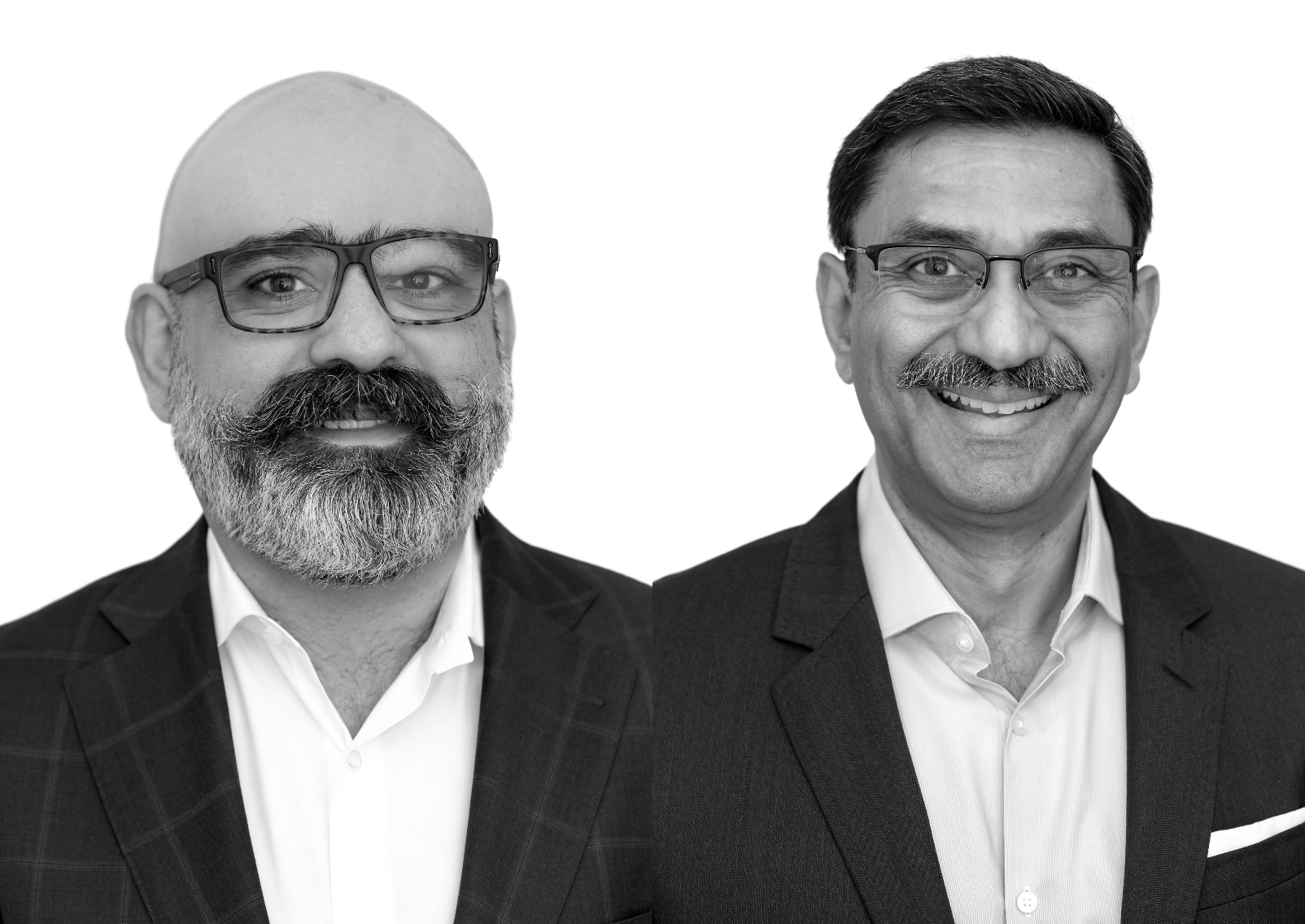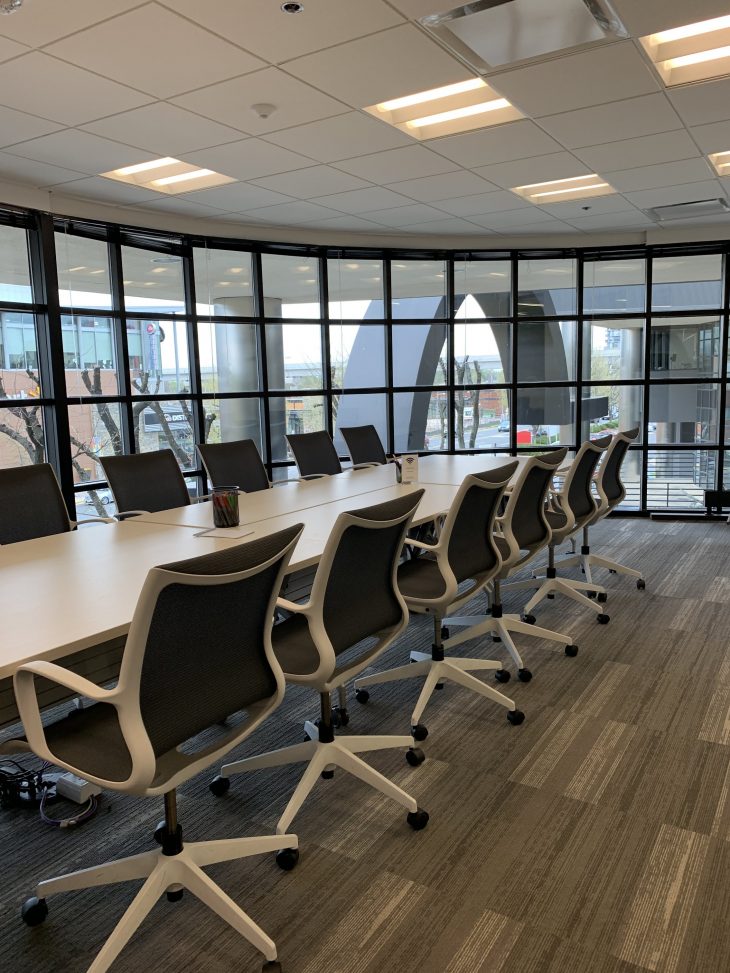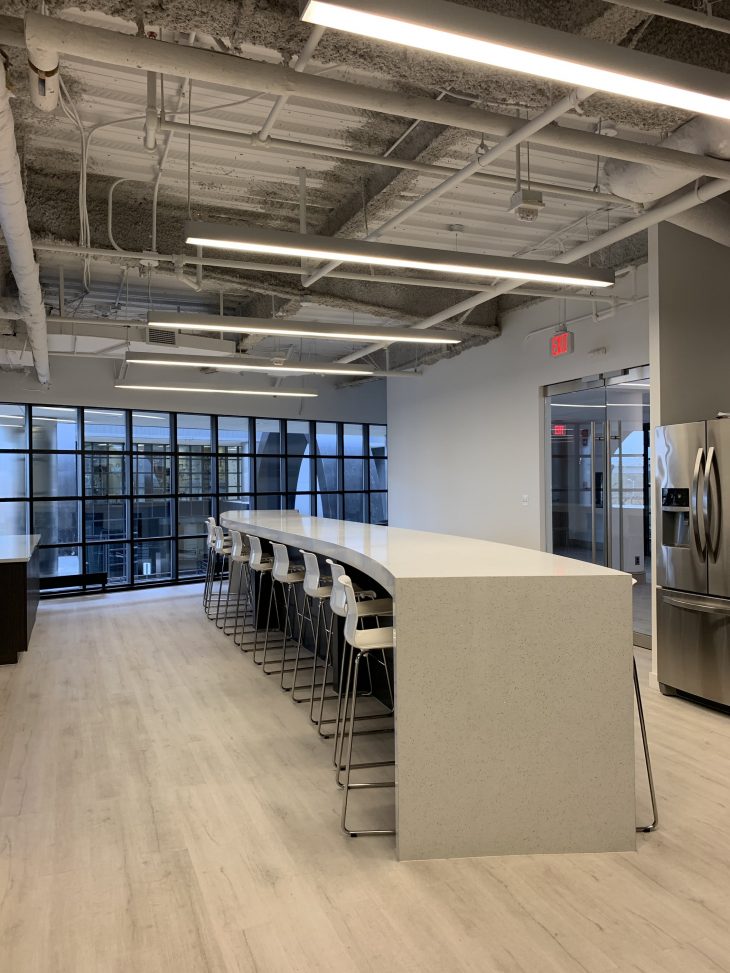WDM talks with NuAxis Innovations’ co-founder and CEO Imran Akram, President Raza Latif, and Director of Business Development, Lindsey Tepp on why their completely open-plan space does the best job of supporting the company culture.

Bob Fox: Can you give us a description of NuAxis and the type of work you guys do?
Raza: We are an IT services company for the federal government. We work in traditional infrastructure space for agencies, or departments like the Department of Interior, Department of Labor, and GSA. This is the office where business development, finance, HR, recruiting, and other functions sit, but most of our staff are remote, therefore this is the center of the operation. We’ve been around since 2002, although we started pretty small. Over the last ten years, we’ve grown, expanded and created a strong company culture.
Bob: That’s great. How many employees do you have?
Raza: We employ about four hundred people, with two big presences in the DC area and in Denver. We also have people in different parts of the country, but because we support the government, these areas are our biggest locations.
Imran: We have staff in over twenty-one states!
Raza: When we retained our first official space, one of the biggest benefits was how you could stand up and see everyone. We only had one office in this space, which was for the controller, and then everybody else was outside in the open. It was much more functional than our previous spaces but in our space now, we have chosen to bring a little more aesthetic in as well.
Keep in mind we are not a law firm or lobbyist group, so we are not ostentatious. We still wanted a space that makes you look forward to coming to work.

Bob: Can you give me some insight into the demographics of your people?
Raza: We have a pretty young company. In terms of age demographics, we have many employees who have joined us fresh out of college.
Bob: Tell me about how would describe the company culture and the people.
Lindsey: We have a collaborative company culture. There are always conversations going on and it’s rarely quiet. We all like to work together. I don’t think we even realize how much we hang out. In our last office we were in cubicles, but they almost seemed like a bit of a barrier, so we thought, “why don’t we just get rid of all the walls”.
Bob: That leads me to my next question: How does the space support the company culture for you? Is there something about the space that reflects the culture?
Raza: Because we moved from private offices, to cubes and back to no cubes, we now have small partitions. Our space supports the culture and like Lindsey said, it’s a collaborative company culture. I think the company’s evolved a little around the space as well. I always give an example of when I’m sitting down and working on something, and something comes up, you ask a question, and everyone can offer an answer. Or, I can overhear many conversations and stay updated without needing a meeting.
Imran: The situational awareness is good and there’s also a congeniality. There’s no hierarchy; we keep it flat. Obviously, we have fancier titles, but everybody has a voice. We don’t want to create any barriers.
Bob: I think that’s great the two of you sit out in the open. Tell me, how did you arrive at that decision? What has your experience been?
Raza: We didn’t think twice or deliberated over it. We just knew this is how it should be.
Imran: Sometimes you have to take a phone call you don’t want everyone to hear, but we have enough collaboration and private space, so you don’t need to stay put.
Bob: Do people use those private spaces?
Raza: They don’t.
Lindsey: People have these firm plans of, “I’m going to maintain my privacy”, however once you’re in this space, you realize the benefits outweigh any concerns.

Bob: I’m fascinated because with most organizations, people are hesitant to give up their private office. Here, it’s the complete opposite.
Lindsey: That’s why it’s extremely important that Imran and Raza don’t have a private office. Leadership sets the tone, and that’s made it easier for all of us to adopt.
Bob: When you set out to design this space, did you have any sort of overarching goal that you wanted to do with the space?
Imran: A collaborative company culture. We wanted the office space to support that culture. I think we were also influenced by more cliché images of a Google-type office. We had a business plan we were moving toward that involved significant software development work. It’s a requirement to collaborate.
Bob: How is this space supporting your business?
Raza: Imran and I have discussed this, we looked forward to coming to this space. It’s become an extension of our lives and our happy space. We can get stressed out. There are proposals going on etc., but I think it’s still remains our go-to space. Part of it is the space, part of it is people.
Bob: I also get the sense you’re celebrating people being here.
Raza: It’s all organic. For the holidays, we used to do a cubicle decoration competition in the old space. This year we said, “We don’t have cubicles! What are we going to do?” Instead, we said, “Let’s just bring stuff in.”
Bob: Where do you think you get the biggest value out of your physical work environment and where do you feel like you’re getting the most value from the organization?
Lindsey: I think the café 100 percent. The social aspect of the office has increased from it. Previously, when we would do any holiday parties, there wouldn’t be enough room for everyone in the conference room. To have everyone feel included, with a seat, and have the open area has been huge. We all eat lunch there daily – something we also couldn’t do in the old office.

Bob: Is it the social connection?
Lindsey: Yes.
Imran: We used to wonder, “What is company culture?” We couldn’t put a finger on it.
Raza: We thought we come to work, we go home and that’s what we do.
Imran: Suddenly, we realized the way we do things is the culture.
Raza: Another more tangible business strategy that Imran mentioned is how people would rather come to work here than from home. I think that’s valuable because we want people to feel involved.
Lindsey: Also our location helps because everything’s walkable. There are many food options available, you don’t have to get in a car and drive to lunch.
Bob: You mentioned earlier that you felt the culture is collaborative. I’m wondering if there’s a value that you see can attribute to the space?
Raza: The speed of communication. If someone has a question for another colleague, our open space allows us to have a five-minute dialogue and then it’s done. Everybody is communicating efficiently and quickly.
Bob: Is there a particular space your staff gravitates to or that they work in more often?
Lindsey: The fishbowl is super popular, which everyone did not when we were moving. People thought, “Everyone’s going to see me,” but it’s actually nice to work in. If you want to have a more private conversation, you can use these spaces see where everyone is.
Bob: What do you think your space communicates when somebody walks in for the first time?
Raza: I like the emotion that the word “collegial” evokes. When people walk in, people should feel it’s a fun and collegial place. It’s the opposite of stuffy. It’s a modern and fresh environment
Bob: Do you use the space to attract talent?
Raza: We do. People come as part of their ongoing orientation.
Lindsey: I think it’s helped us with partnering too. We bring many partners through here often. It’s important for them to understand our culture because it’s reflected in all aspects of how we do business. It has been a useful tool, and we will purposely walk guests through the space. You can tell a lot about us just with a quick tour.
Bob: Do you have any measures for how you track the performance of the space, or organizational performance?
Lindsey: No, but our turnover is low. I don’t think anyone’s left the corporate office in a year.

Bob: What part of the space are you most willing to spend money on?
Raza: We love spending money on TVs. If you give me a wall, I’m going to put a TV on it. We are just a bunch of geeks at the end of the day! One thing that we do not shy away from spending on is technology. We are also conservative. By design, we do not go after the shiniest objects.
Bob: How do you guys communicate with your staff?
Raza: I think in the office it’s mostly verbal.
Imran: Or email and Skype for business.
Bob: What criteria did you use to determine the best office location?
Lindsey: People use the metro, so I think at this point, it would be hard to move away from metro. People start to rely on it.
Raza: I think we are a creation of circumstances. These are not deliberate issues here. We knew the metro was coming, and a Wal-Mart is coming, so we said, “Let’s stay around here, this will become a nice place,” and here we are.



I always using this application how to download showbox apk forward this visit to all users.